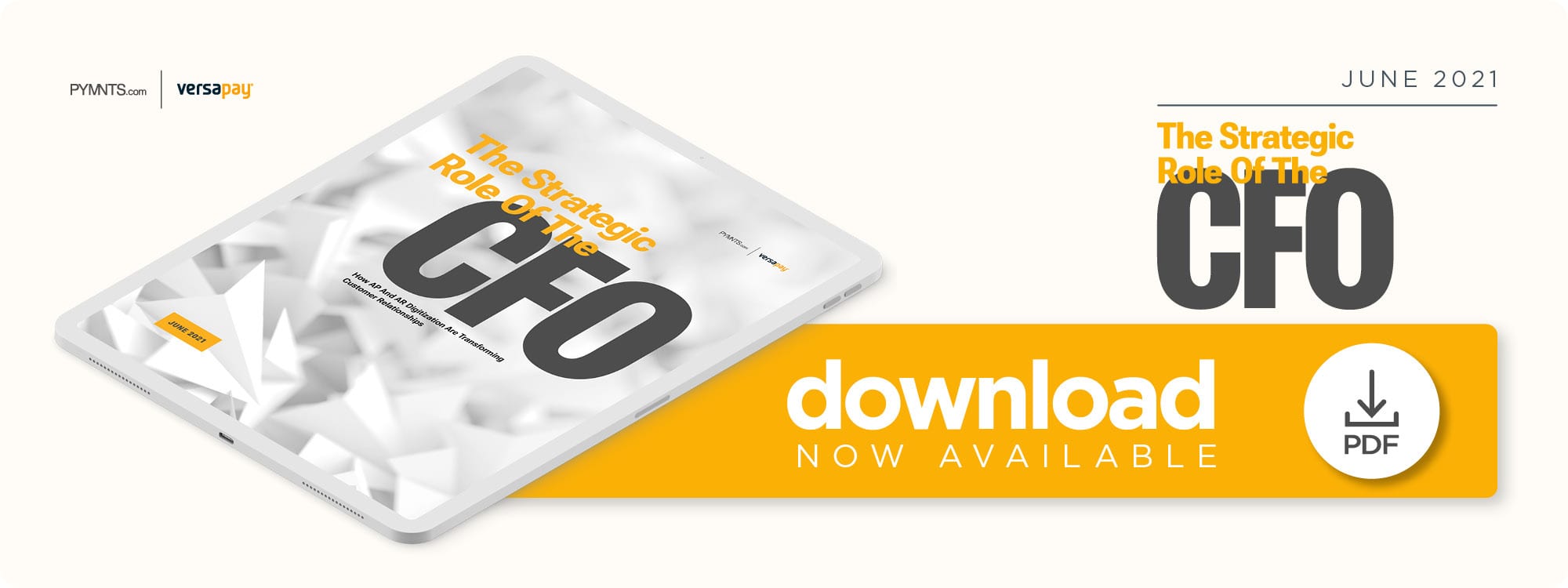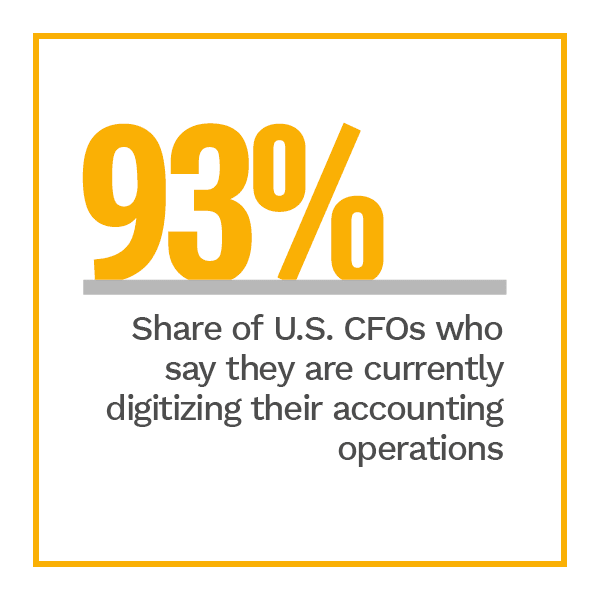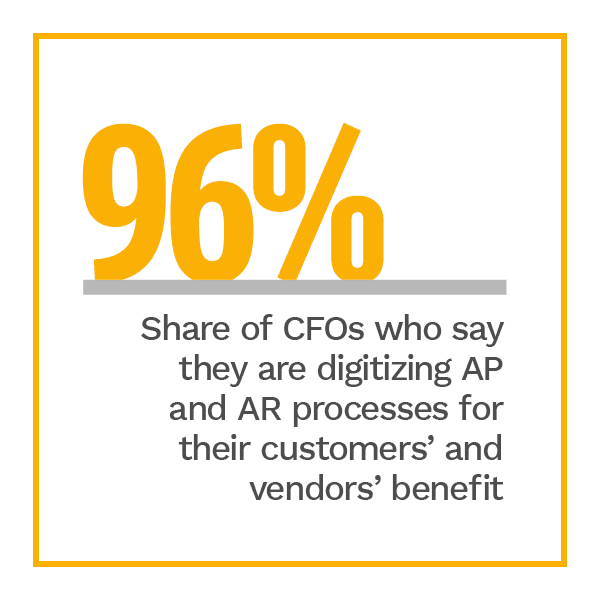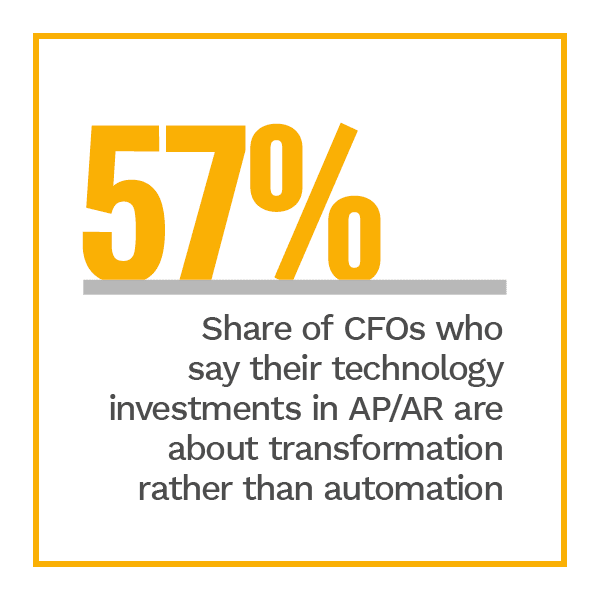NEW DATA: 96 Pct Of CFOs Are Digitizing Payments To Improve Customer, Vendor Satisfaction

 Evidence of the digital shift is not hard to find, from the millions of office workers who continue to work from home to the fleets of Amazon trucks coursing through neighborhoods. A less conspicuous wave of digital adoption is occurring in company accounting and finance departments, however — and its scope may be even wider and more far-reaching.
Evidence of the digital shift is not hard to find, from the millions of office workers who continue to work from home to the fleets of Amazon trucks coursing through neighborhoods. A less conspicuous wave of digital adoption is occurring in company accounting and finance departments, however — and its scope may be even wider and more far-reaching.
 Nearly 93 percent of firms in the United States with at least $25 million in revenues are currently digitizing their accounts payable (AP) and accounts receivable (AR) operations, according to a recent PYMNTS survey of 400 chief financial officers (CFOs). It’s not just the scale of digitization that is remarkable, but what executives expect to get from it. Nearly every single CFO we queried — 96 percent — view these investments as vital to improving relationships with customers and vendors, far outweighing distinct operational benefits, like faster payment processing times.
Nearly 93 percent of firms in the United States with at least $25 million in revenues are currently digitizing their accounts payable (AP) and accounts receivable (AR) operations, according to a recent PYMNTS survey of 400 chief financial officers (CFOs). It’s not just the scale of digitization that is remarkable, but what executives expect to get from it. Nearly every single CFO we queried — 96 percent — view these investments as vital to improving relationships with customers and vendors, far outweighing distinct operational benefits, like faster payment processing times.
These are among the notable data points to emerge from PYMNTS’ latest study, The Strategic Role Of The CFO: How AP And AR Digitization Are Transforming Customer Relationships. The report, a collaboration with Versapay, is based on a survey of company leaders at a cross-section of firms, including those in the technology, finance and manufacturing sectors. The report not only seeks to document the digital shift in company finance departments, but to also illuminate what is driving it.
It’s clear from our data that the pandemic was a catalyst for overhauling business-to-business (B2B) invoicing and payment practices that have long been mired in inefficiencies and paper-based processes, including a heavy reliance on checks. Digitization has in fact been an important means by which firms have been able to integrate or increase their use of digital and electronic payment methods. More than half of CFOs say they have not only increased their use of ACH, but also ePayables with virtual cards and real-time payments.
 CFOs are taking a wider view on AP/AR modernization that goes beyond payment methods or the reduction of manual processes, however. Payments are no longer viewed merely as a back-office function to be ironed out long after a contract or purchase order is signed. CFOs instead appear to view seamless payment capabilities more often as essential to acquiring customers and maintaining long-term loyalty. For 63 percent of CFOs, the main way the pandemic impacted their strategic objectives was to elevate the importance of lifetime customer value.
CFOs are taking a wider view on AP/AR modernization that goes beyond payment methods or the reduction of manual processes, however. Payments are no longer viewed merely as a back-office function to be ironed out long after a contract or purchase order is signed. CFOs instead appear to view seamless payment capabilities more often as essential to acquiring customers and maintaining long-term loyalty. For 63 percent of CFOs, the main way the pandemic impacted their strategic objectives was to elevate the importance of lifetime customer value.
This strategic orientation is reflected in another aspect of our study. More than half of CFOs (57 percent) say that in modernizing AP/AR operations, they primarily hope to achieve transformation – to bring new and better capabilities to their operations, rather than automation — the elimination of manual functions and processes. At the same time, this transformation-versus-automation paradigm varies depending on a company’s size and sector. To learn how and why and discover many other insights from our research, download the report.
